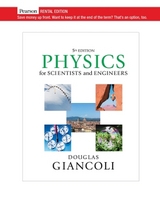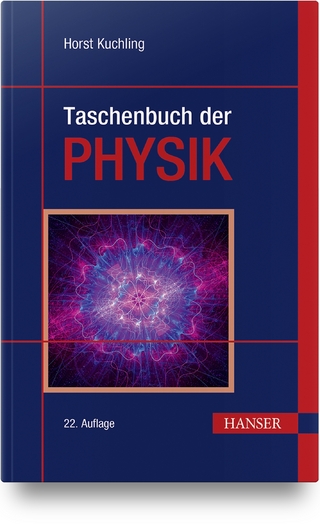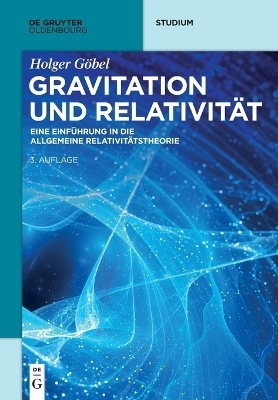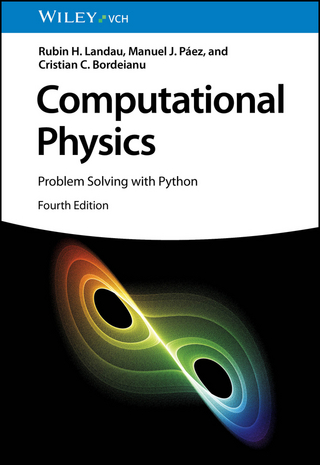
Physics for Scientists & Engineers, Volume 1 (Chapters 1-20)
Pearson (Verlag)
978-0-13-227358-9 (ISBN)
- Titel erscheint in neuer Auflage
- Artikel merken
This long-awaited and extensive revision maintains Giancoli's reputation for creating carefully crafted, highly accurate and precise physics texts. Physics for Scientists and Engineers combines outstanding pedagogy with a clear and direct narrative and applications that draw the student into the physics. The new edition also features an unrivaled suite of media and online resources that enhance the understanding of physics.
This book is written for students. It aims to explain physics in a readable and interesting manner that is accessible and clear, and to teach students by anticipating their needs and difficulties without oversimplifying.
Physics is a description of reality, and thus each topic begins with concrete observations and experiences that students can directly relate to. We then move on to the generalizations and more formal treatment of the topic. Not only does this make the material more interesting and easier to understand, but it is closer to the way physics is actually practiced.
Douglas C. Giancoli obtained his BA in physics (summa cum laude) from UC Berkeley, his MS in physics at MIT, and his PhD in elementary particle physics back at the UC Berkeley. He spent 2 years as a post-doctoral fellow at UC Berkeley’s Virus lab developing skills in molecular biology and biophysics. His mentors include Nobel winners Emilio Segrè and Donald Glaser. He has taught a wide range of undergraduate courses, traditional as well as innovative ones, and continues to update his textbooks meticulously, seeking ways to better provide an understanding of physics for students. Doug’s favorite spare-time activity is the outdoors, especially climbing peaks. He says climbing peaks is like learning physics: it takes effort and the rewards are great.
CONTENTS OF VOLUME 1
APPLICATIONS LIST xii
PREFACE xiv
AVAILABLE SUPPLEMENTS AND MEDIA xxii
NOTES TO STUDENTS (AND INSTRUCTORS) ON THE FORMAT xxiv
COLOR USE: VECTORS, FIELDS, AND SYMBOLS xxv
CHAPTER1: INTRODUCTION, MEASUREMENT, ESTIMATING
1—1 The Nature of Science
1—2 Models, Theories, and Laws
1—3 Measurement and Uncertainty; Significant Figures
1—4 Units, Standards, and the SI System
1—5 Converting Units
1—6 Order of Magnitude: Rapid Estimating
*1—7 Dimensions and Dimensional Analysis
SUMMARY
QUESTIONS
PROBLEMS
GENERAL PROBLEMS
CHAPTER 2: DESCRIBING MOTION: KINEMATICS IN ONE DIMENSION
2—1 Reference Frames and Displacement
2—2 Average Velocity
2—3 Instantaneous Velocity
2—4 Acceleration
2—5 Motion at Constant Acceleration
2—6 Solving Problems
2—7 Freely Falling Objects
*2—8 Variable Acceleration; Integral Calculus
*2—9 Graphical Analysis and Numerical Integration
SUMMARY
QUESTIONS
PROBLEMS
GENERAL PROBLEMS
CHAPTER 3: KINEMATICS IN TWO OR THREE DIMENSIONS; VECTORS
3—1 Vectors and Scalars
3—2 Addition of Vectors–Graphical Methods
3—3 Subtraction of Vectors, and Multiplication of a Vector by a Scalar
3—4 Adding Vectors by Components
3—5 Unit Vectors
3—6 Vector Kinematics
3—7 Projectile Motion
3—8 Solving Problems Involving Projectile Motion
3—9 Relative Velocity
SUMMARY
QUESTIONS
PROBLEMS
GENERAL PROBLEMS
CHAPTER 4: DYNAMICS: NEWTON’S LAWS OF MOTION
4—1 Force
4—2 Newton’s First Law of Motion
4—3 Mass
4—4 Newton’s Second Law of Motion
4—5 Newton’s Third Law of Motion
4—6 Weight–the Force of Gravity; and the Normal Force
4—7 Solving Problems with Newton’s Laws: Free-Body Diagrams
4—8 Problem Solving–A General Approach
SUMMARY
QUESTIONS
PROBLEMS
GENERAL PROBLEMS
CHAPTER 5: USING NEWTON’S LAWS: FRICTION, CIRCULAR MOTION, DRAG FORCES
5—1 Applications of Newton’s Laws Involving Friction
5—2 Uniform Circular Motion–Kinematics
5—3 Dynamics of Uniform Circular Motion
5—4 Highway Curves: Banked and Unbanked
*5—5 Nonuniform Circular Motion
*5—6 Velocity-Dependent Forces: Drag and Terminal Velocity
SUMMARY
QUESTIONS
PROBLEMS
GENERAL PROBLEMS
CHAPTER 6: GRAVITATION AND NEWTON’S6 SYNTHESIS
6—1 Newton’s Law of Universal Gravitation
6—2 Vector Form of Newton’s Law of Universal Gravitation
6—3 Gravity Near the Earth’s Surface; Geophysical Applications
6—4 Satellites and “Weightlessness”
6—5 Kepler’s Laws and Newton’s Synthesis
*6—6 Gravitational Field
6—7 Types of Forces in Nature
*6—8 Principle of Equivalence; Curvature of Space; Black Holes
SUMMARY
QUESTIONS
PROBLEMS
GENERAL PROBLEMS
CHAPTER 7: WORK AND ENERGY
7—1 Work Done by a Constant Force
7—2 Scalar Product of Two Vectors
7—3 Work Done by a Varying Force
7—4 Kinetic Energy and the Work-Energy Principle
SUMMARY
QUESTIONS
PROBLEMS
GENERAL PROBLEMS
CHAPTER 8: CONSERVATION OF ENERGY
8—1 Conservative and Nonconservative Forces
8—2 Potential Energy
8—3 Mechanical Energy and Its Conservation
8—4 Problem Solving Using Conservation of Mechanical Energy
8—5 The Law of Conservation of Energy
8—6 Energy Conservation with Dissipative Forces: Solving Problems
8—7 Gravitational Potential Energy and Escape Velocity
8—8 Power
*8—9 Potential Energy Diagrams; Stable and Unstable Equilibrium
SUMMARY
QUESTIONS
PROBLEMS
GENERAL PROBLEMS
CHAPTER 9: LINEAR MOMENTUM
9—1 Momentum and Its Relation to Force
9—2 Conservation of Momentum
9—3 Collisions and Impulse
9—4 Conservation of Energy and Momentum in Collisions
9—5 Elastic Collisions in One Dimension
9—6 Inelastic Collisions
9—7 Collisions in Two or Three Dimensions
9—8 Center of Mass (CM)
9—9 Center of Mass and Translational Motion
*9—10 Systems of Variable Mass; Rocket Propulsion
SUMMARY
QUESTIONS
PROBLEMS
GENERAL PROBLEMS
CHAPTER 10: ROTATIONAL MOTION
10—1 Angular Quantities
10—2 Vector Nature of Angular Quantities
10—3 Constant Angular Acceleration
10—4 Torque
10—5 Rotational Dynamics; Torque and Rotational Inertia
10—6 Solving Problems in Rotational Dynamics
10—7 Determining Moments of Inertia
10—8 Rotational Kinetic Energy
10—9 Rotational Plus Translational Motion; Rolling
*10—10 Why Does a Rolling Sphere Slow Down?
SUMMARY
QUESTIONS
PROBLEMS
GENERAL PROBLEMS
CHAPTER 11: ANGULAR MOMENTUM; GENERAL ROTATION
11—1 Angular Momentum–Object Rotating About a Fixed Axis
11—2 Vector Cross Product; Torque as a Vector
11—3 Angular Momentum of a Particle
11—4 Angular Momentum and Torque for a System of Particles; General Motion
11—5 Angular Momentum and Torque for a Rigid Object
11—6 Conservation of Angular Momentum
*11—7 The Spinning Top and Gyroscope
*11—8 Rotating Frames of Reference; Inertial Forces
*11—9 The Coriolis Effect
SUMMARY
QUESTIONS
PROBLEMS
GENERAL PROBLEMS
CHAPTER 12: STATIC EQUILIBRIUM; ELASTICITY AND FRACTURE
12—1 The Conditions for Equilibrium
12—2 Solving Statics Problems
12—3 Stability and Balance
12—4 Elasticity; Stress and Strain
12—5 Fracture
*12—6 Trusses and Bridges
*12—7 Arches and Domes
SUMMARY
QUESTIONS
PROBLEMS
GENERAL PROBLEMS
CHAPTER 13: FLUIDS
13—1 Phases of Matter
13—2 Density and Specific Gravity
13—3 Pressure in Fluids
13—4 Atmospheric Pressure and Gauge Pressure
13—5 Pascal’s Principle
13—6 Measurement of Pressure; Gauges and the Barometer
13—7 Buoyancy and Archimedes’ Principle
13—8 Fluids in Motion; Flow Rate and the Equation of Continuity
13—9 Bernoulli’s Equation
13—10 Applications of Bernoulli’s Principle: Torricelli, Airplanes, Baseballs, TIA
*13—11 Viscosity
*13—12 Flow in Tubes: Poiseuille’s Equation, Blood Flow
*13—13 Surface Tension and Capillarity
*13—14 Pumps, and the Heart
SUMMARY
QUESTIONS
PROBLEMS
GENERAL PROBLEMS
CHAPTER 14: OSCILLATIONS
14—1 Oscillations of a Spring
14—2 Simple Harmonic Motion
14—3 Energy in the Simple Harmonic Oscillator
14—4 Simple Harmonic Motion Related to Uniform Circular Motion
14—5 The Simple Pendulum
*14—6 The Physical Pendulum and the Torsion Pendulum
14—7 Damped Harmonic Motion
14—8 Forced Oscillations; Resonance
SUMMARY
QUESTIONS
PROBLEMS
GENERAL PROBLEMS
CHAPTER 15: WAVE MOTION
15—1 Characteristics of Wave Motion
15—2 Types of Waves: Transverse and Longitudinal
15—3 Energy Transported by Waves
15—4 Mathematical Representation of a Traveling Wave
*15—5 The Wave Equation
15—6 The Principle of Superposition
15—7 Reflection and Transmission
15—8 Interference
15—9 Standing Waves; Resonance
*15—10 Refraction
*15—11 Diffraction
SUMMARY
QUESTIONS
PROBLEMS
GENERAL PROBLEMS
CHAPTER 16: SOUND
16—1 Characteristics of Sound
16—2 Mathematical Representation of Longitudinal Waves
16—3 Intensity of Sound: Decibels
16—4 Sources of Sound: Vibrating Strings and Air Columns
*16—5 Quality of Sound, and Noise; Superposition
16—6 Interference of Sound Waves; Beats
16—7 Doppler Effect
*16—8 Shock Waves and the Sonic Boom
*16—9 Applications: Sonar, Ultrasound, and Medical Imaging
SUMMARY
QUESTIONS
PROBLEMS
GENERAL PROBLEMS
CHAPTER 17: TEMPERATURE, THERMAL EXPANSION, AND THE IDEAL GAS LAW
17—1 Atomic Theory of Matter
17—2 Temperature and Thermometers
17—3 Thermal Equilibrium and the Zeroth Law of Thermodynamics
17—4 Thermal Expansion
*17—5 Thermal Stresses
17—6 The Gas Laws and Absolute Temperature
17—7 The Ideal Gas Law
17—8 Problem Solving with the Ideal Gas Law
17—9 Ideal Gas Law in Terms of Molecules: Avogadro’s Number
*17—10 Ideal Gas Temperature Scale–a Standard
SUMMARY
QUESTIONS
PROBLEMS
GENERAL PROBLEMS
CHAPTER 18: KINETIC THEORY OF GASES
18—1 The Ideal Gas Law and the Molecular Interpretation of Temperature
18—2 Distribution of Molecular Speeds
18—3 Real Gases and Changes of Phase
18—4 Vapor Pressure and Humidity
*18—5 Van der Waals Equation of State
*18—6 Mean Free Path
*18—7 Diffusion
SUMMARY
QUESTIONS
PROBLEMS
GENERAL PROBLEMS
CHAPTER 19: HEAT AND THE FIRST LAW OF THERMODYNAMICS
19—1 Heat as Energy Transfer
19—2 Internal Energy
19—3 Specific Heat
19—4 Calorimetry–Solving Problems
19—5 Latent Heat
19—6 The First Law of Thermodynamics
19—7 Applying the First Law of Thermodynamics; Calculating the Work
19—8 Molar Specific Heats for Gases, and the Equipartition of Energy
19—9 Adiabatic Expansion of a Gas
19—10 Heat Transfer: Conduction, Convection, Radiation
SUMMARY
QUESTIONS
PROBLEMS
GENERAL PROBLEMS
CHAPTER 20: SECOND LAW OF THERMODYNAMICS
20—1 The Second Law of Thermodynamics–Introduction
20—2 Heat Engines
20—3 Reversible and Irreversible Processes; the Carnot Engine
20—4 Refrigerators, Air Conditioners, and Heat Pumps
20—5 Entropy
20—6 Entropy and the Second Law of Thermodynamics
20—7 Order to Disorder
20—8 Unavailability of Energy; Heat Death
*20—9 Statistical Interpretation of Entropy and the Second Law
*20—10 Thermodynamic Temperature Scale; Absolute Zero and the Third Law of Thermodynamics
*20—11 Thermal Pollution, Global Warming, and Energy Resources
SUMMARY
QUESTIONS
PROBLEMS
GENERAL PROBLEMS
| Erscheint lt. Verlag | 15.5.2007 |
|---|---|
| Sprache | englisch |
| Maße | 219 x 287 mm |
| Gewicht | 1544 g |
| Themenwelt | Naturwissenschaften ► Physik / Astronomie |
| ISBN-10 | 0-13-227358-6 / 0132273586 |
| ISBN-13 | 978-0-13-227358-9 / 9780132273589 |
| Zustand | Neuware |
| Informationen gemäß Produktsicherheitsverordnung (GPSR) | |
| Haben Sie eine Frage zum Produkt? |
aus dem Bereich



